Crater (vessel)
A krater ( ancient Greek κρατήρ kratḗr , meaning long e and emphasis on e ; plural: ancient Greek κρατῆρες kratéres , German kratére ) is originally a vessel for mixing wine and water, which was used in ancient Greece for festive occasions such as banquets and symposiums . The name comes from the Greek word for "to mix". The crater was used together with a psykter . This was inserted into the crater. It is still unclear whether the chalice or psykter contained the wine or the coolant. Craters could be made from clay or bronze . They were in use until the Hellenistic period. In modern times, craters formed a basic form for vases , which - further developed in varying forms - were set up for decorative and representational purposes, primarily in garden and interior design.
This name gives the constellation Crater (German cup ) and is also used for geological structures that are characterized by a funnel-shaped depression or trough with a pronounced ring-shaped edge.
| Type | variant | comment | Redrawing | example |
|---|---|---|---|---|
| Mycenaean crater based on the shape of an amphora |
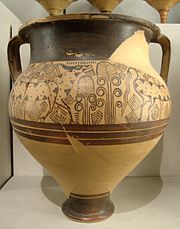
|
|||
| Geometric foot crater | was used as a burial vessel |

|
||
| Late geometric bow handle crater |

|
|||
| Colonette Crater | also pole handle crater , originated around 600 BC In Corinth and was called Korinthios in ancient Greece . The colonnette-shaped bow handles carried a protruding square plate |
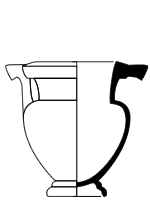
|
||
| Corinthian Colonette Crater |

|
|||
| Attic red-figure column crater |

|
|||
| Chalcidian crater | also bow handle craters |
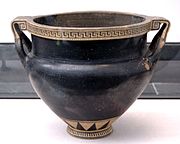
|
||
| Volute crater | Was initially used as a bronze vessel in Laconia . The particularly splendid crater, known in ancient Greece as the lakonikos crater, was built in the first half of the 6th century BC. Taken over from an Attic pottery workshop. |

|
||
| Attic volute crater |
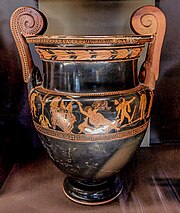
|
|||
| Lower Italian volute crater |

|
|||
| Calyx crater | With him, the handles were placed in the lower third of the vessel. The chalice crater was created in the second half of the 6th century BC. Developed in an Attic pottery workshop. |
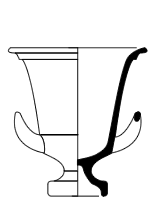
|
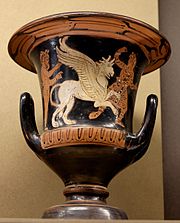
|
|
| Bell crater | originated in the 5th century BC Chr. |

|
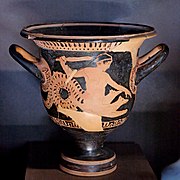
|
|
| Skyphos crater |

|

|
||
| Krateriskos | ||||
| Dinos ( Lebes ) |
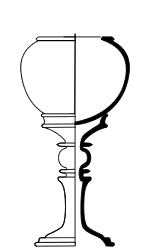
|

|
||
| Dinos pool |

|
|||
| Dinos stand |

|
See also
literature
- Wolfgang Schiering : The Greek clay pots. Shape, purpose and change of form (= Gebr.-Mann-Studio-series ). 2nd, significantly changed and expanded edition. Mann, Berlin 1983, ISBN 3-7861-1325-4 .